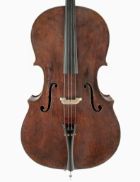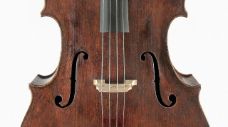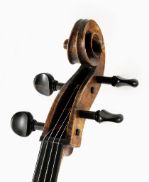Violoncello, Roman school, back plate by Giulio Cesare Gigli, 2nd half of the 18th century
The label in this instrument is from David Tecchler, a luthier who was born in southern Germany and lived in Rome, but stylistic features indicate that he did not build the cello. Much rather, the back plate is likely to have been made by Giulio Cesare Gigli (1724/25–1794). The contours of the instrument were modified to make it conform to the standard size common since the late 18th century. Both the upper and lower bouts were shortened and new edges were made, changing the shape of the arching and thus eliminating features decisive for a stylistic identification. The spruce belly with medium-wide annual rings is made of three parts, with the broad central plate flanked by two wings. The quarter-cut maple back exhibits regular, tight flames that descend toward the edges. The wood of the ribs and of the pegbox and scroll has a very similar structure. The beautifully shaped f-holes are upright and reminiscent of Amati’s style. The shape of the volutes is oriented on Tecchler’s work. An unusual detail is a C-shaped opening at the transition between the pegbox and the scroll. It was made later, possibly to make it easier to thread the D string. The attractive, reddish-brown varnish is still largely intact.






